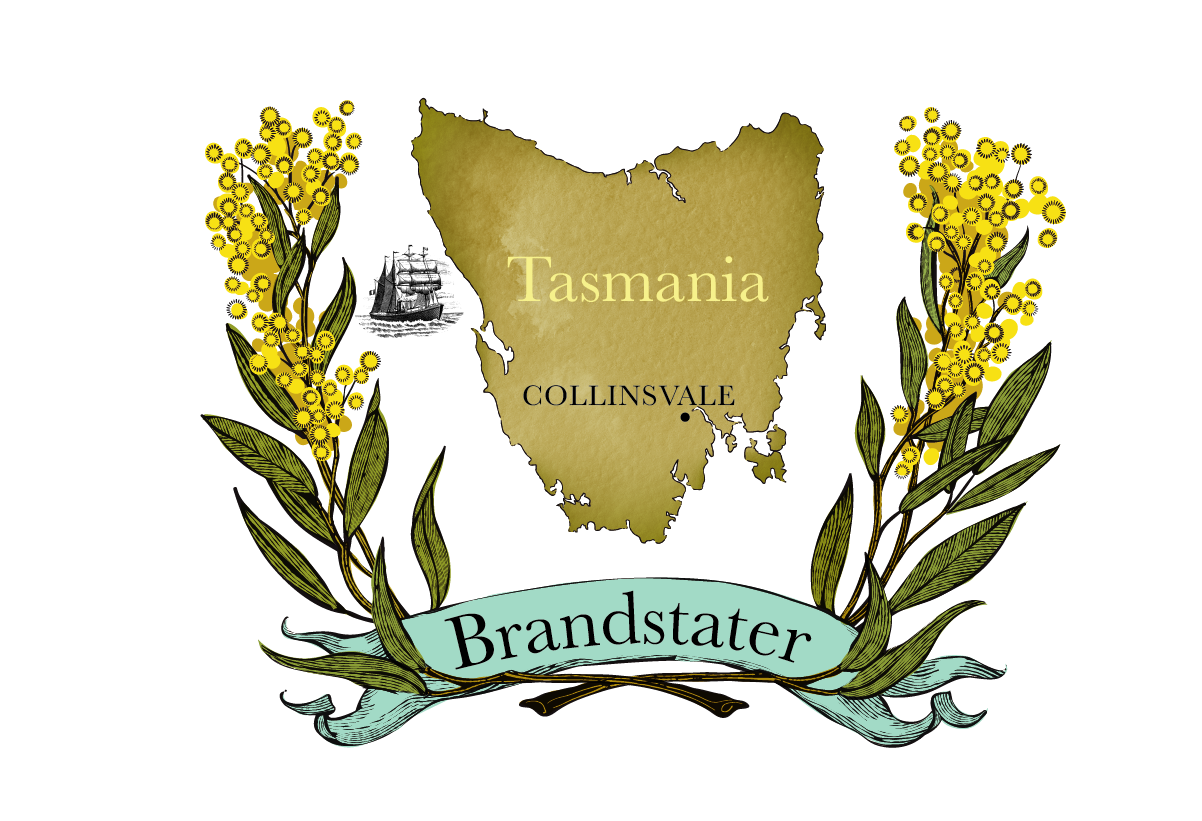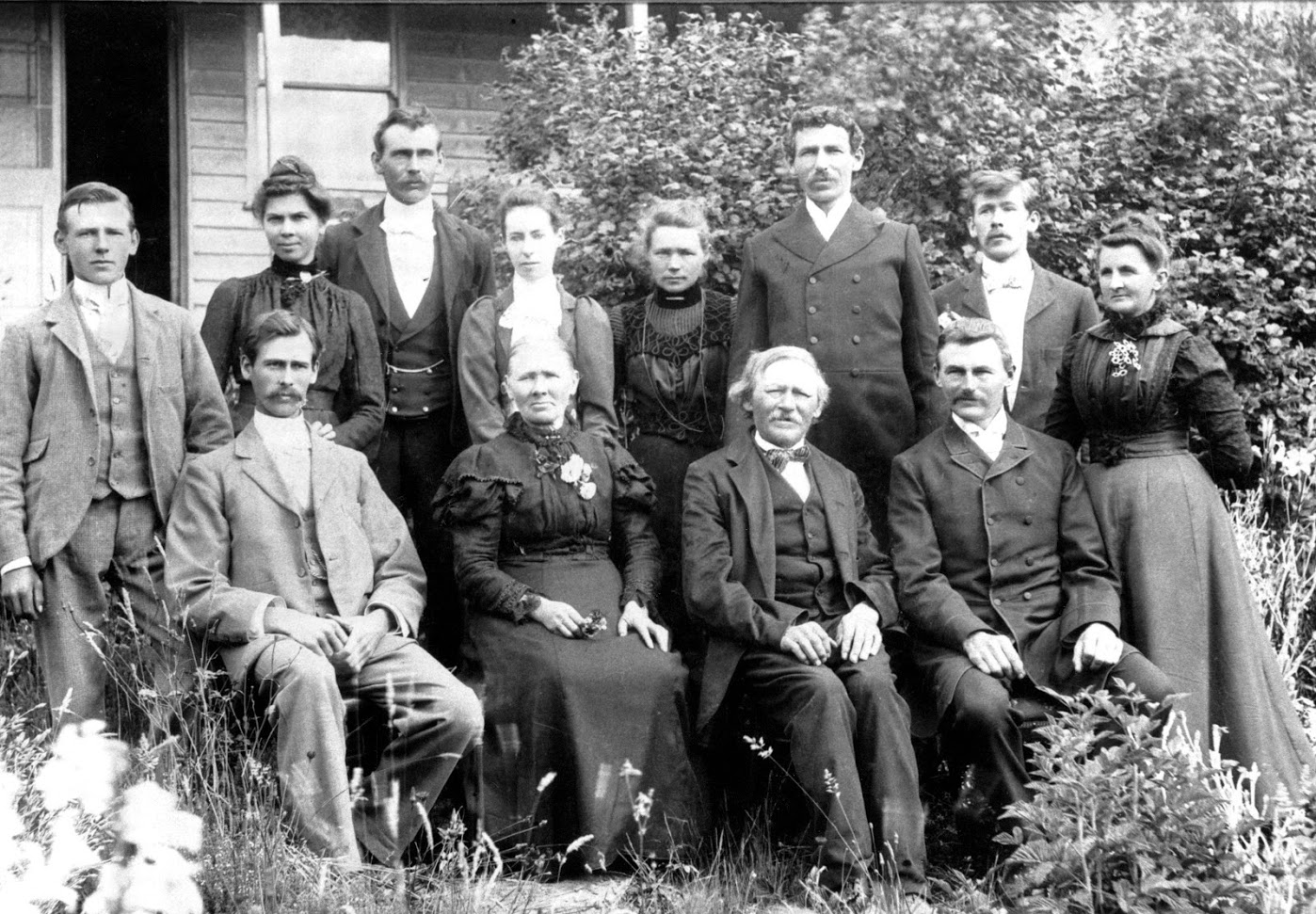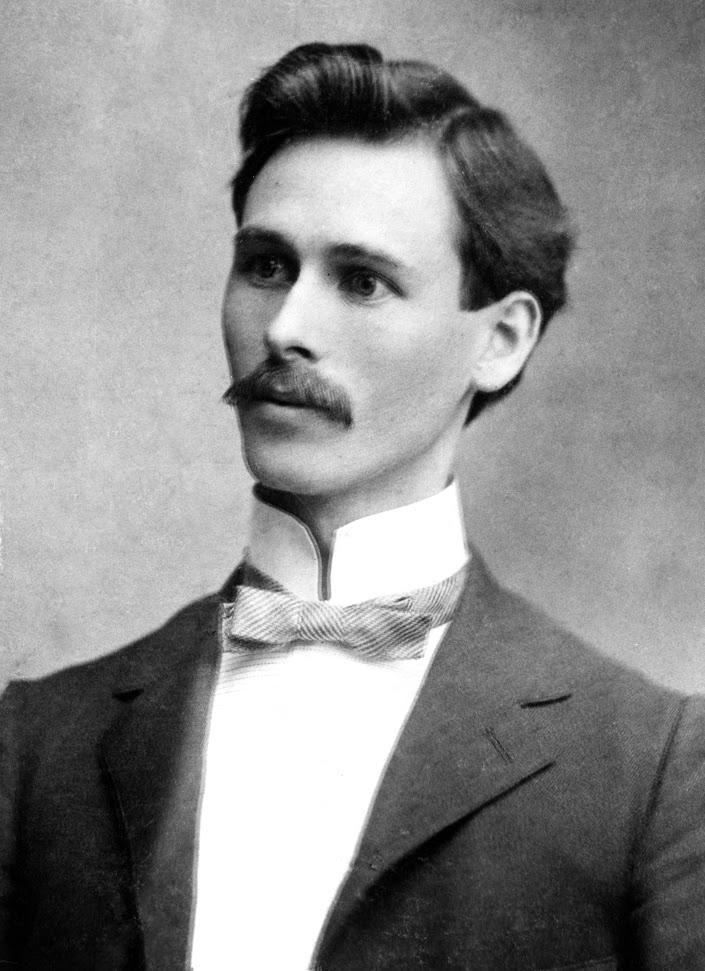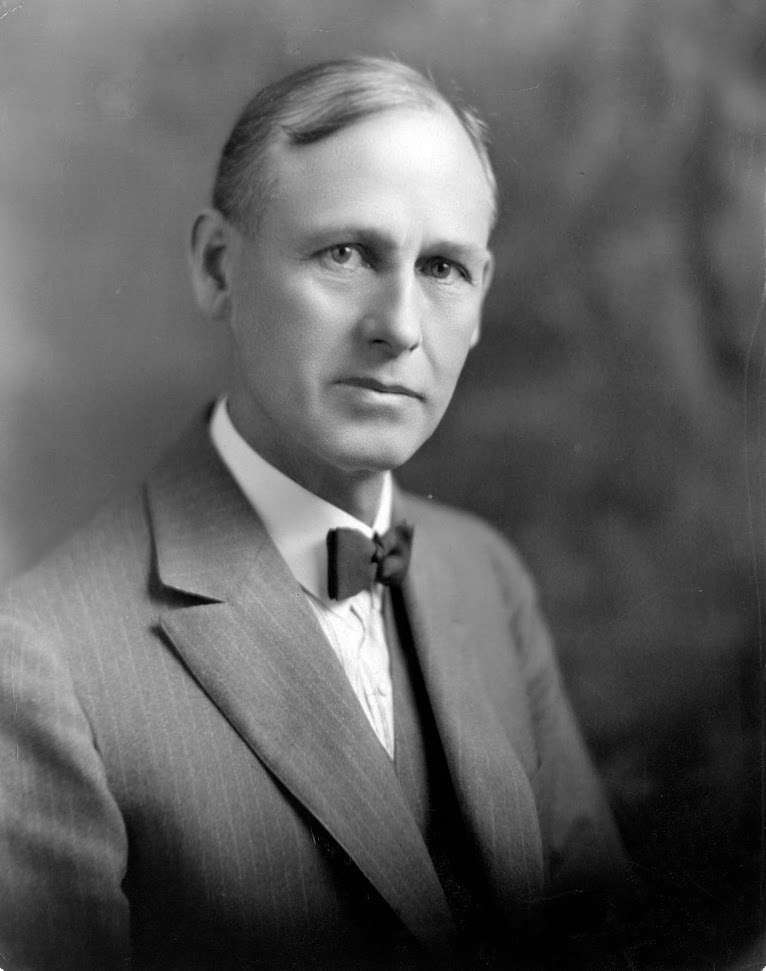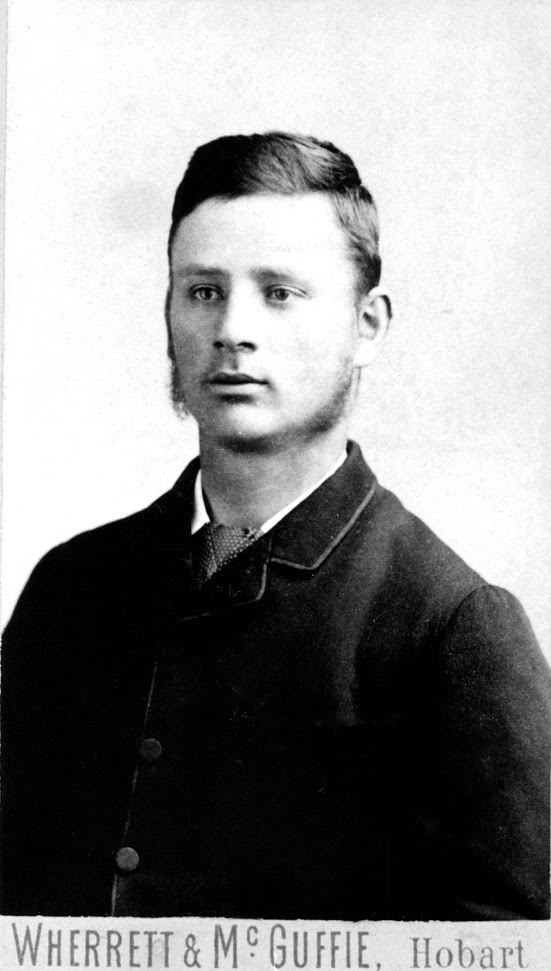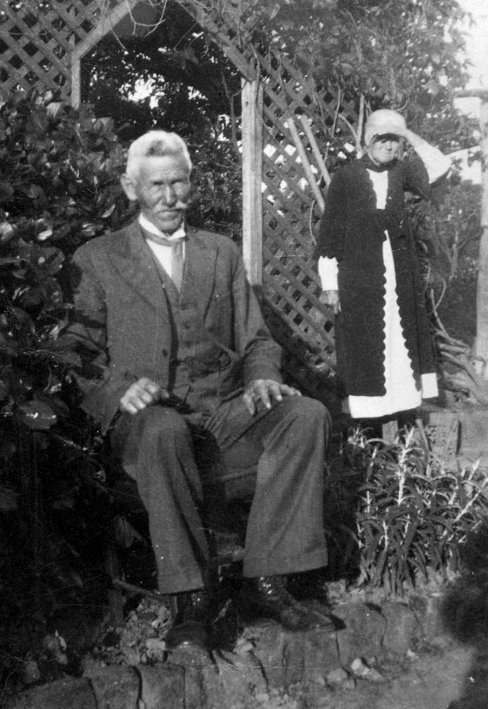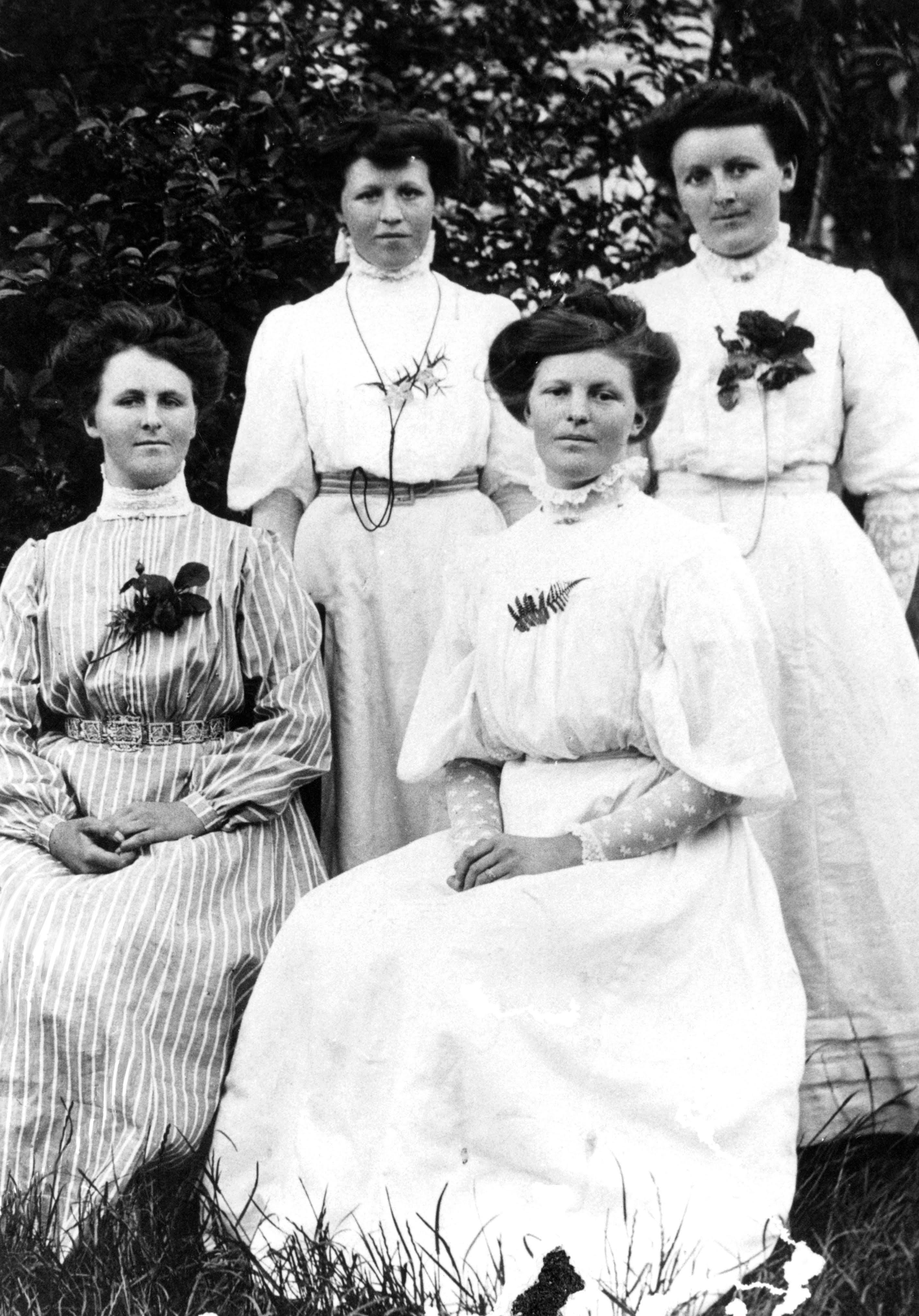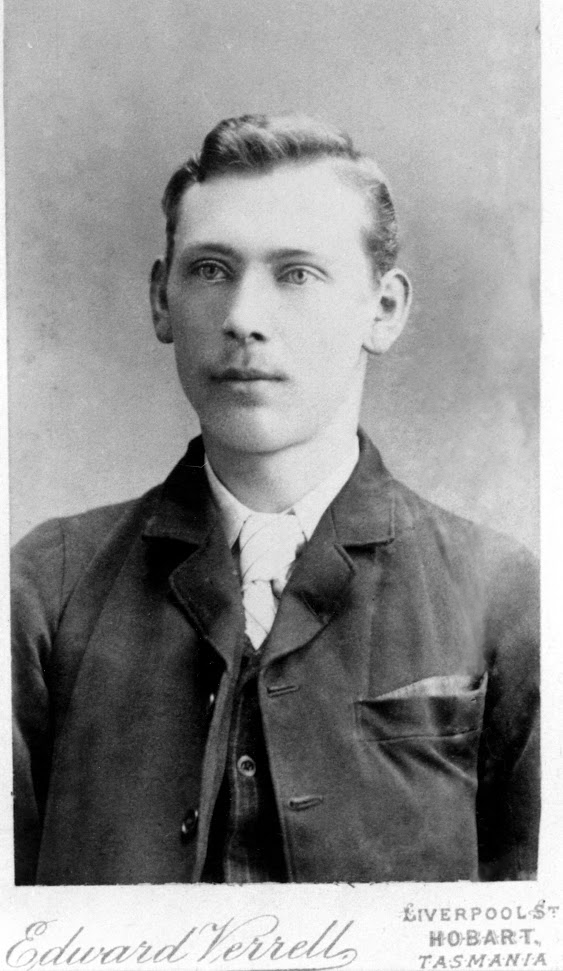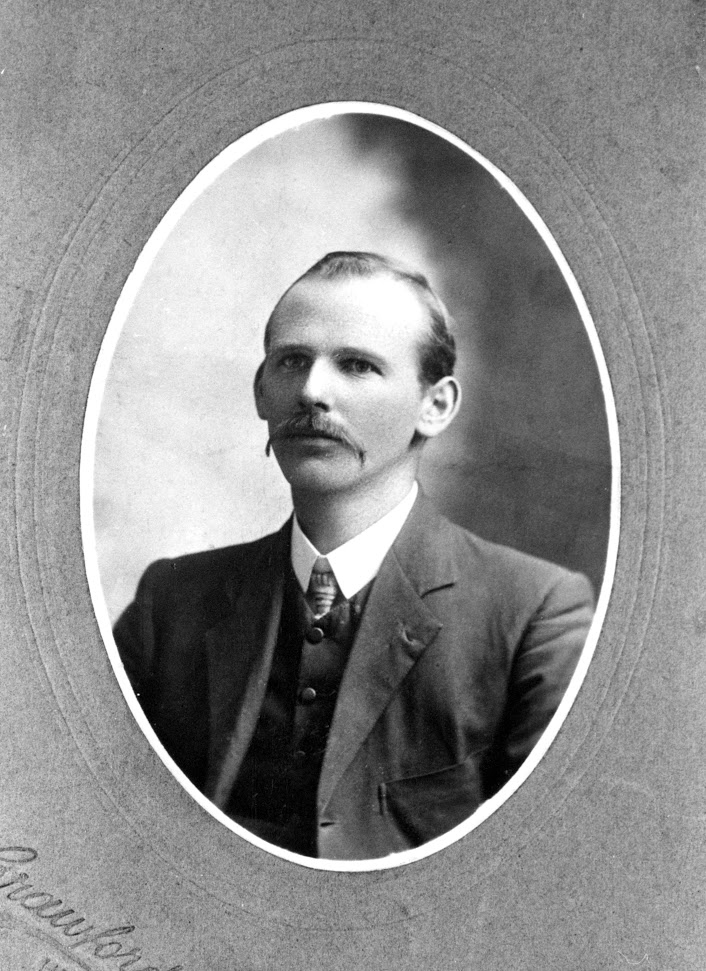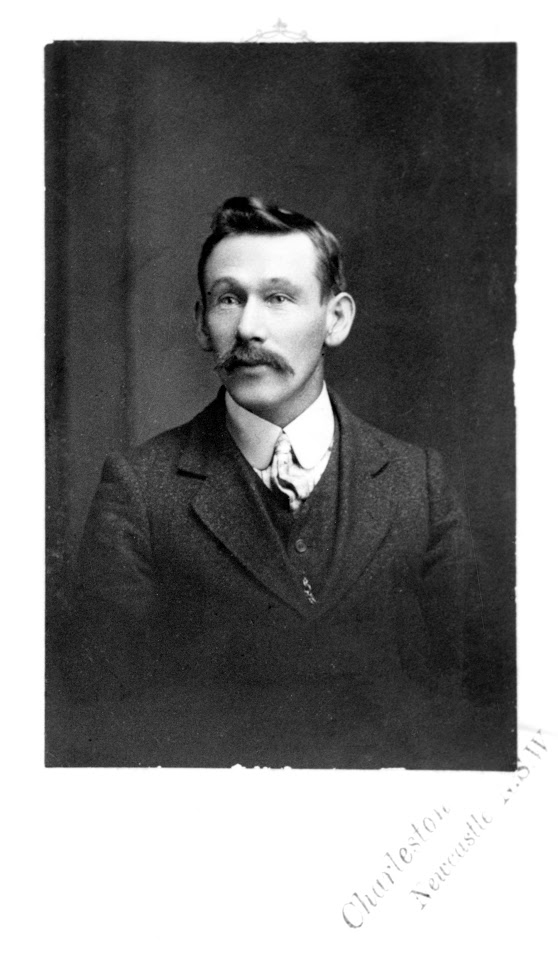Those who belong to the Australian Brandstater tradition don’t know much about Albert Brandstater. Yet what we do know reveals him as an upstanding , talented young man who pursued higher education in America. He married a loyal American wife, Margaret, and after a limited time of living in Tasmania, he adopted the United States as his permanent home. There he developed a successful professional career and produced three sons.
Some uncertainties surround Albert’s early beginning. He was the first child born, in 1875, to Emanuel and Carolina Brandstater after their arrival in Tasmania in 1872. But that island was still a British Crown Colony. So though he was a native Tasmanian, Albert might have been called a British subject. He could have claimed Australian citizenship only later, after the several mainland states were declared to be united and to constitute the Commonwealth of Australia in 1900. It was a new sovereign nation.
There remains for some of us a question about Albert’s legal birth name, though official records in Tasmania would surely settle the matter. All of us in the Australian family have always referred to him as Albert. But we discovered much later that in California his American family knew and still remember him as Charles, an alternative name that surprised us. In this history we will call him Albert, leaving the name Charles to the later, youngest son of our First Family. We have consistently known this younger brother as Uncle Charlie.
These early uncles were a precious connection between our era and those first settlement years. When I (Bernard) was a schoolboy in Sydney I did have some acquaintance with two of the great uncles, those who were child-age members of the First Family, sailing with the rest and arriving in Hobart 1872. The ones I knew were Gustav Adolph (Uncle Arthur) and Herman. We missed the older brother in that arriving First Family, Emanuel Jr, He died early in 1915 at age 53, before our generation appeared. And Albert, years younger than the others, chose not to remain in Australia and become another uncle, with different worldview than the others, and different accomplishments. With his American wife, Albert chose to make the United States his permanent home. So for the rest of us in Australia, he remained throughout his life out of sight and mostly out of mind.
With that overview before us, we will now reconstruct some details in the course of Albert’s life. His earliest years were spent, first as a baby, then as a schoolboy, and later a vigorous teenager, while living in the early Brandstater house on Springdale Road in Bismarck, Tasmania. His father Emanuel Sr. had built this house for the family on a 37 acre section of farmland that he had acquired on generous terms from authorities in Hobart. Their priority was to encourage men to open up forested land to make room for cultivation of fruit and vegetables for domestic consumption. So through his early years Albert was surrounded by a mixed farm, with cultivation of marketable domestic eatables, to which were added the eggs and dairy foods provided by a few cows and chickens.
The farmhouse was some distance, possibly two miles on foot, from the village school , So Albert did a lot of walking during his years in school, the one built by his father in 1876. And what was schooling like in the Bismarck of that era? In the English tradition, those years would have stretched from age 5 to age 14, though we don’t know how far into the high school years the public school in Bismarck could take him. By his mid-teens Albert would have been robust enough to do his share of heavy farm work, as well as timber logging and cutting. In the picking season, apples, raspberries and gooseberries had to be picked at exactly the best time, and that was also true of other crops like hops, successfully grown in the fertile valley of Molesworth, close to Bismarck, and much in demand by beer brewers. The harvest season called for the help of every able-bodied person in the village, including youngsters like Albert. Even young Roy, many years later, spoke nostalically of the his happy hop-picking seasons in Molesworth.
We have a good photo of Albert as a young man, probably nearing twenty, taken before his departure to study in Battle Creek College. What we do know about Albert is that he grew into a good-looking young man, with a mind to match. He was likely affected by the counsel of Ellen White when she visited Bismarck in 1895. Meeting these robust, thoughtful young Brandstater men, Gustav Adolph and Albert, Ellen had seen both of them locked into a narrow life on the farm which offered a limited future. So she urged some further education, and recommended the broadening effect of studying in Battle Creek College in Michigan. It was an Adventist church college where sturdy faith could be nurtured. She saw the value to these young men of exposure to foreign travel and different cultures. Gustav Adolph was old enough to act soon on this advice, but the younger Albert had to wait some years for his turn to come.
At last his turn did come, and there must have been grievous family separations in Bismarck. With number one son, Emanuel Jr, living in Northern Tasmania with his young family, and with second son Gustav Adolph already gone to faraway Battle Creek, now the third son was also launching into the big, bad world. Neither Gustav nor Albert left us a description of the studies they tackled at Battle Creek College. There they were dealing with educational standards at a higher level than the public school approaches they had known in Bismarck. In Battle Creek they might have faced some of the classic English “greats” made notorious at Oxford and Cambridge, including the rigorous subjects that marked an educated man: Latin, Greek, Philosophy and English Literature. Also at Battle Creek there were ongoing debates between traditionist educators who favored a relentless emphasis on the classics, but resisted by others, including W.W. Prescott, who insisted on giving generous attention also to Biblical studies.
In addition to stern book work, Albert would have been required to do hours of work in the famous Kellogg Sanitarium, or elsewhere after its devastating fire, to help pay for his tuition. But we have no records of these details. He would have joined the circle of young Australian Adventists who were either studying at Battle Creek or were employed there. This group used to have social gatherings in Ellen White’s vacant house. That is where his brother Gustav Adolph had met, and later married, an eligible female visiting from Australia, Florence Grattedge.
One significant feature of Albert’s life in Battle Creek was his talent with music. It was his son Kenneth who reported this to me, recalled from many reminiscences that passed between father and son. Albert was an active contributor to the music life at the College. It was likely a continuance of the music-makng playfulness he had enjoyed in his community of Bismarck. He had a good singing voice, a talent which showed up later in other young Brandstater men from Bismarck, like Charlie, Gordon and Roy. At some point Albert joined a young woman named Margaret Kessler in singing vocal duets. They must have been truly outstanding and in demand. The partnership was deepened eventually when they were joined in marriage. We cannot tell much more about the Kessler family. But Margaret remained a sturdy part of the Brandstater family for the rest of her days. For some time after college, she and Albert formed a two-person evangelistic team. They sang together and toured in the southern states where gospel music was popular. They sometimes performed on river boats, an outreach ministry that James Edsworth White had pioneered years before.
Ken spoke proudly to me of that part of Albert’s life, marked by noble purpose and some pleasing success. Ken was proud of his father’s sturdy and upright character. Albert walked the talk. However, Ken was less complimentary about Margaret’s role as his mother. He described her as a strict, sometimes harsh, disciplinarian who was not likeable. In time Margaret got better acquainted with the Australian Brandstaters, for she accompanied Albert when the time came for him to return to his birth country and his family in Tasmania.
Albert must have wondered what kind of career awaited him in Tasmania. What we do know is that he entered into a business partnership with his older brother, Emanuel Jr, to establish and operate a timber mill in the midst of Bismarck village. Both of the brothers had done a lot of timber work in their young growing years, and Emanuel Jr had acquired hands-on knowledge about steam engines and sawmill machinery. Some start-up financing for a new timber mill may have come from Margaret and her family. And for a while, that Brandstater mill was successful. It was situated on the banks of Sorrell Creek that flowed through the village, and on an access road engineered for them by the county, and named Mill Road. It still bears that name, the corner being situated just beyond the Sorrell Creek bridge. The mill supplied much sawn hardwood, a commodity needed for the building construction work, then very active in Tasmania.
During this period in Tasmania, Albert and Margaret occupied a fine house that Emanuel Jr had originally intended for his own young family. But in deference to the refined tastes of this newcoming American wife, the new house became Margaret’s domain. Margaret had borne two sons previously, and while in Bismarck she gave birth to the youngest, Kenneth, who was born in Hobart. Of this accident of birth Ken was proud, and reminded me more than once that he was born an Australian. Meanwhile Emanuel Jr and his family moved to another house-and-farm at the end of Valley Road. Years later, this was the house and farm that became the property of Fred and Lydia Peterson.
Failure of the Brandstater Mill
Success at the Brandstater mill on Sorrell Creek did not last. At an undetermined date, the whole mill property was destroyed in a disastrous fire. So the enterprise that might have stabilized Albert in his home country, amongst his own people, became a grim failure. And the partnership of brothers broke down. Both Emanuel and Albert had to find new sources of livelihood and new careers. Albert and Margaret weighed their options, and they decided to return to the U.S. There they could be closer to Margaret’s family, and Albert could pursue a professional career that he had chosen. It was dentistry. We do not know what led Albert to be attracted to dentistry. But his college classwork in Battle Creek helped him get accepted to study dentistry , believed by some to have been in the San Francisco area. Allen has a different recollection, which locates Albert’s dentistry studies in Northwestern University in Evanston, Illinois. Whatever may be the reality, it seems likely that during years of serious study, Northern California became the home for Albert and Margaret and their children. Apparently he was a competent student, and passed all his exams. Armed at last with a D.D.S. degree, Albert remained there for some time, practicing in the Bay area. But eventually he chose to set up practice in Los Angeles. So in 1917 the family and their boys headed south., and set up house in Glendale.
After staying tenaciously for those years in Tasmania, Albert was seen no more by his Australian family until the late 1930s. That is when he and his son Kenneth visited Sydney harbor, while cruising the Pacific as part of a world tour. That was late in Albert’s life, perhaps 1938. I remember well the Brandstater family reunion we enjoyed on that day, when a group of Brandstater loyalists gathered in Sydney’s beach suburb of Manly, to honor the visitors from California. We have a good photo of the three brothers, Gustav, Herman and Albert, together with Ken, during that visit. Albert had spent most of his professional life in California, following his profession of dentistry in a regular, disciplined practice. He died in 1940, the cause believed to have been a sudden heart infarction. Albert is interred in Forest Lawn in Glendale, and his wife Margaret lies beside him there. It was forty years later, long after Albert’s death that we, the next generation of visiting Australians, connected with his surviving sons Glenn and Ken in California and became acqainted with Albert’s American descendants.
The rest of Albert’s life story was lived out in California, in the big city of Los Angeles. Many details of their homes, and the fortunes of their three sons, have been recorded for us by my esteemed cousin Allen Brandstater, son of Glenn Allen B. By searching, I found some memories of his presence there. In the early 1970s I met Dr. Lonser, an early medical man who had studied at the College of Medical Evangelists in 1946. And he remembered Albert as a church member in the White Memorial Church. He also remarked on what a fine voice Albert had, when singing with the church choir. He also remembered the sight of Albert and family driving away after church in a large luxury automobile.
Dr. Lonser also recalled the office where Dr. Brandstater practiced dentistry in his early years. It was located on what is now Cesar Chavez Avenue, directly opposite the White Memorial Hospital, which was built in 1917. Albert’s productive life was spent primarily in the disciplined and efficient practice of dentistry in central Los Angeles. But Allen informs us that at times Albert had other dental offices in other locations in Los Angeles. Eventually all Albert’s three sons also were engaged in dental practice in that city, making a total of four Brandstater men practicing in the same profession.
Albert may have been influenced and helped by another Brandstater immigrant, William, the son of Gustav Adolph. This older uncle Gustav had been engaged in developing a sanitarium in the New Zealand city of Christchurch. As a young man, William had left his family in Christchurch and had sought larger horizons in Los Angeles. There he became a physical therapist and he practiced in that field all his life. He and his wife Ruth and their daughter Beverly were well known members of Glendale City Seventh-day Adventist Church.
I met William only once, in an early visit to Los Angeles, when he was living with his daughter Beverly in their home on Doran Street in Glendale. I was taken there to meet them by cousin Ken Brandstater. And it appeared obvious that Ken had close relationships from related families; they were both sons of brothers Gustav and Albert from the original Tasmanian family. They had kept in close connection for many years in Los Angeles. There William became a physical therapist and he practiced in that field all his life. He and his wife Ruth and their daughter Beverly were well known members of Glendale City Seventh-day Adventist Church. Albert and Margaret were also known to be church people, at first perhaps in San Francisco, and later, along with many medical colleagues, in Glendale or at the White Memorial Church.
Three sons: Oliver, Glenn and Kenneth Brandstater
We now must consider the careers of three sons that were produced by Albert and Margaret: Oliver, Glenn and Kenneth.. Oliver’s birthdate was 1903, location uncertain. We do know that Kenneth was born in 1909 in Hobart, or probably its suburb Glenorchy, in Tasmania. But Glenn was a genuine American, born in 1905 at the Battle Creek Sanitarium in Michgan. The family lived in several different locations, recorded for us by his grandson Allen, and included as Allen’s memoir elsewhere at this website.
From that early period, probably from the San Francisco years, we have an excellent photograph of all five of them . It is assumed that the three sons also took part in some of their parents’ Adventist church life. But their family life was described to me as not smooth and conducive to harmony and religious pursuits. The boys seem to have been not well disciplined, and Ken described Margaret as a strict, even nasty, person who was neither friend-forming nor lovable. Perhaps some of their friends would take a more gentle view than Ken’s.
But also, Allen has been generous in providing detailed life histories of the three sons. All three of them studied responsibly and with noteworthy success; they were all smart enough to become credentialed dentists. And at that time father Albert was profitably engaged in dental practice, and was able to finance the dental education of all three sons at University of Southern California. Their success was different, both in dentistry, and in a different direction, also in marriage.
Oliver, the eldest son, had a series of five wives. He is described as being tall and handsome, at 6 ft 4 in, suggesting he had charm though not constancy. He fathered no children. He lived and practiced in Hollywood for many years. His last wife was Barbara, whom Allen remembers as “an extremely attractive and comely redhead and an excellent cook.” It was in 1959 or 1960 that Oliver re-established his dental practice in the Coachella Valley, and lived there in Indio. Oliver was a heavy smoker and he died of lung cancer in 1970.
Glenn engaged in extensive dental practice, and was married to three wives. From one of them , Valera Trimmer, daughter of grandparents Trimmer, a son was born whom they named Allen. But the marriage was not stable, with alcoholism a shared threat, and Allen’s childhood upbringing was entrusted much to his Trimmer grandparents. Their names were Earl Client Trimmer and Lauretta O’Hara Trimmer. To them Allen gives immense gratitude for their caring for him through his earliest years. He declares they were neither poor nor rich, but they gave him what he needed: rules, standards, and…..love. Allen does not remember seeing his father Glenn until he was twelve years old, his biological parents having been long separated and struggling to recover from alcoholism..
Glenn eventually did escape from alcohol in 1955, and he re-established himself in dental practice. After separating from Valera, Allen’s mother, in 1964, Glenn had gained renewed confidence in dental practice, and he entered a prolonged relationship with Mary “Pinky” Rinehart in those years. I was able to meet only once this new woman in Glenn’s life. Glenn married “Pinky” in 1970. But he suffered from severe emphysema, the irreversible aftermath of prolonged heavy smoking. Just once Glenn accompanied Ken on a visit to the Brandstater house on Dwight Street in Redlands. He was cordial, glad to be amongst his cousins, though he was visibly dyspneic, and resorted often to breathing from an oxygen tank. Meanwhile his son Allen continued to live with his Trimmer grandparents. Glenn died of advanced emphysema in 1973.
During the prewar 1940s, Ken had served as an officer in the U.S. Navy. That service terminated shortly before Pearl Harbor. But when war in the Pacific did break out, it involved all three of the brothers in some sort of military service. Glenn chose to join the U.S.Army Dental Corps, and worked hard on thousands of enlisted men. That war interrupted for all three their pursuit of stable dental practice, and also probably of stable marriage. But other pursuits intervened also. Both Oliver and Glenn, due partly to influences met in the military, acquired a taste for alcohol, and at times they took too much of it. Meanwhile young Allen was sent by his grandparents for years to Glendale Union Academy, an Adventist school, and for a short time to La Sierra College, from where some of his fellow students still remember him.
In 1988 Allen married Lynn Bourdon, a mental health professional.. And Allen himself pursued an active career as a publicist and a political consultant. For years Allen’s name appeared regularly in large letters as author of a regular political column. in the Glendale newspaper. And he has worked strenuously as election strategy manager for Republican candidates for political office.
Kenneth Brandstater
Ken, Albert’s youngest son, was able and sensible enough to resist the alcohol habit. And he married a beautiful young woman named Mary Gaylord. The two of them made a photogenic couple, and they produced two active sons, Albert and Bill. Ken engaged seriously in dental practice. In the post-war years it was in 1952 that Neridah and I had first arrived in Los Angeles, after sailing across the Pacific on our way to graduate study in Philadelphia. We enjoyed the generous hospitality of Ken and Mary, with their two super-active young boys. At that time Ken drove me on a tour of Los Angeles, and pointed out the location of his dental office on Hollywood Boulevard. Also Ken introduced me then to the magic of the Los Angeles freeways and the mysteries of dealing with used-car lots in Los Angeles.
After previously knowing little about the history of Albert Brandstater and his sons, in 1952 I began to realize that Ken Brandstater, Albert’s youngest son, had become a leading surviving voice amongst the Californian Brandstaters. He later took a keen interest in his own grandchildren, Bill’s offspring, and also in the larger family in distant Australia that his father had left behind. Cousins Gordon and Russell Branster had both visited the Los Angeles relatives, and they had urged me and Neridah to call on them when we were planning our arrival in California in 1952. We did indeed call on Ken and Mary, and remained as their house guests for a week.
Also, through his father Albert, Ken had learned about his cousins in Berlin, Wilhelm and Louisa Beutenmuller and their children. That Berlin Louisa had been born in East Prussia as daughter of Louisa Sr, the deaf-mute daughter of E,manuel Brandstater Sr. So she was an older sister to Albert. At the end of World War II, with Berlin in ruins, Ken was able to join Brandstater uncles in Australia in contributing help to young Willi and Gerda Beutenmuller when they got permits to emigrate. When they needed financial help, the uncles provided enough funds that enabled them to migrate to the United States, and finally to Los Angeles. Ken related this story to me, and evemtually introduced me to the Beutenmullers, Willi and Gerda, and also their son Bernd.
We have now reviewed much of the adult career of Albert Brandstater and his family. More might be written about the extensive world tour that Albert and Ken took together late in Albert’s life. That was a father-and-son exercise in life experience and personal values-sharing. But there is nothing on record about it, except a single photograph of the three aging brothers, Gustav, Herman and Albert, plus the younger Ken, together in Australia. In Sydney we had heard of this tour and their impending visit, probably through Uncle Arthur, and that news enabled us to meet with them in Sydney. We have more to learn about Albert’s later health issues and his last illness. From Glenn’s son Allen we have learned that Albert died in 1940 from a sudden heart infarction. His grave is located in Forest Lawn Memorial Park in Los Angeles, and next to him is the grave of his widow Margaret.
Early in our life in Redlands, in early 1970, my father Roy and I were driven by Ken out to Palm Springs. And there Ken took us to greet his long-widowed mother, Margaret, at her retirement residence. She was bright-eyed and clearly delighted to meet at last some of the Brandstaters of whom she had heard much, but whom she never expected to see. We were also pleased to meet this engaging lady , quite alert in her advanced years, who had shared an active life with Uncle Albert Brandstater.
We knew, and she heartily agreed with our sentiments, that Albert was a good, upright and talented man of high principles. Anecdotes gathered by his grandson Allen, about Albert’s generous expressions of Christian kindliness, confirm the reputation that great-uncle Albert had acquired amongst needy people whom Albert had helped. Today he is represented by four capable descendants, Tom, Mary, Stanley and Grace. They are children of Bill, grandchildren of Kenneth, and a credit to our family’s name.

